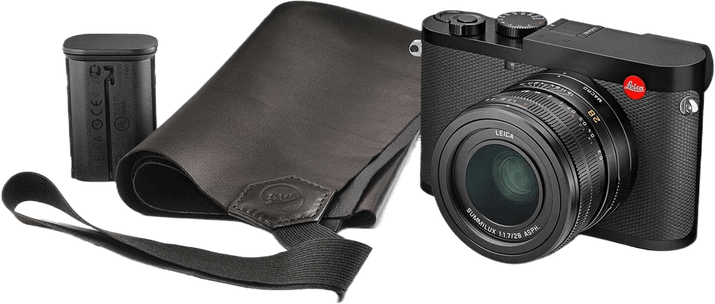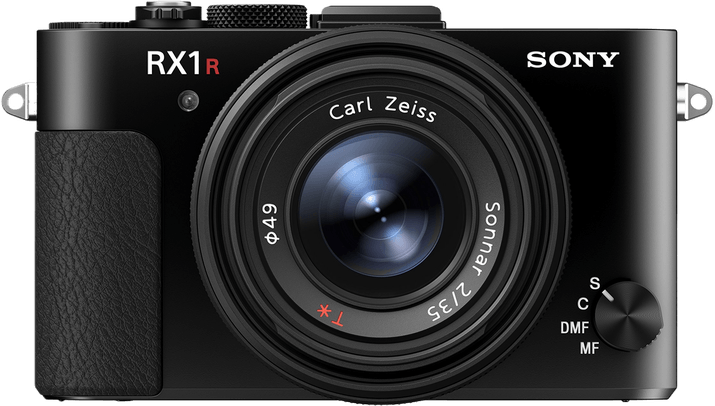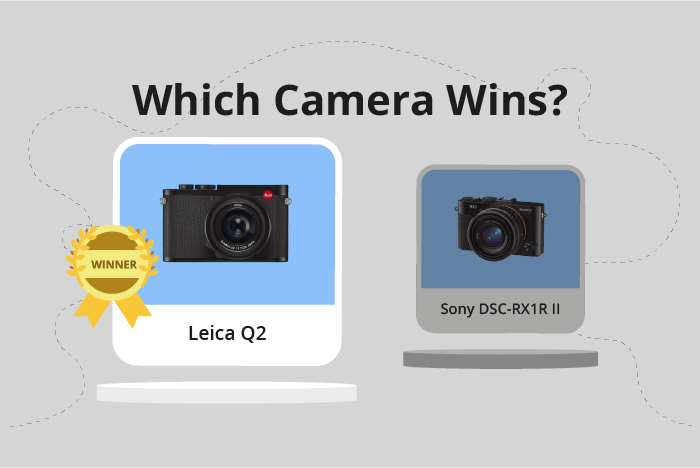Leica Q2 vs Sony Cyber-shot DSC-RX1R II Comparison
Leica Q2

Sony Cyber-shot DSC-RX1R II

The Leica Q2 triumphs over the Sony Cyber-shot DSC-RX1R II with a score of 76/100 compared to Sony’s 62/100. Both cameras share the compact camera type, but the Leica Q2 has a higher launch price of $5000, while the Sony Cyber-shot was introduced at $3300. The Leica Q2, released in 2019, is a newer model than the Sony Cyber-shot, which was launched in 2015.
Despite being larger (130 x 80 x 92mm) and heavier (734g) than the Sony Cyber-shot (113 x 65 x 72mm and 507g), the Leica Q2 offers better overall performance. However, the Sony Cyber-shot DSC-RX1R II is more affordable and easier to carry due to its smaller size and lighter weight.
Considering the score difference and specifications, the Leica Q2 is the superior camera, while the Sony Cyber-shot DSC-RX1R II may be a more practical option for those looking for a lighter, more affordable compact camera.
Leica Q2 vs Sony Cyber-shot DSC-RX1R II Overview and Optics
The Leica Q2 takes the lead in our comparison with an optics score of 79/100, while the Sony Cyber-shot DSC-RX1R II trails behind with a score of 75/100. Both cameras share several specifications, including a CMOS sensor, full-frame sensor size, fixed lens mount, and the absence of image stabilization.
The Leica Q2 outperforms the Sony Cyber-shot DSC-RX1R II in several aspects. With a higher megapixel count of 47.3, the Q2 is capable of capturing more detailed images compared to the RX1R II’s 42.4 megapixels. Moreover, the Leica Q2 boasts a faster shooting speed of 10 frames per second (fps), which is double the 5 fps offered by the Sony RX1R II. This makes the Q2 a better choice for capturing fast-moving subjects. Additionally, the Maestro II processor in the Q2 provides faster image processing and better performance than the Bionz X processor in the RX1R II.
On the other hand, the Sony Cyber-shot DSC-RX1R II has a higher DXOMARK score for the sensor, coming in at 97 compared to the Leica Q2’s 96. This means that the RX1R II has a slightly better sensor performance, which can contribute to better image quality in certain conditions.
Taking all these factors into account, the Leica Q2 emerges as the superior camera in terms of optics, due to its higher megapixel count and faster shooting speed. However, the Sony Cyber-shot DSC-RX1R II still holds its ground with a marginally better sensor performance. Ultimately, the choice between these two cameras will depend on the user’s specific needs and preferences, but the Leica Q2’s advantages in optics make it a strong contender.
Leica Q2 vs Sony Cyber-shot DSC-RX1R II Video Performance
The Leica Q2 outperforms the Sony Cyber-shot DSC-RX1R II in video capabilities, with a score of 91/100 compared to the Sony’s 56/100. Both cameras share some common specifications, but the Leica Q2 has a clear advantage in several areas.
Both the Leica Q2 and the Sony Cyber-shot DSC-RX1R II have built-in microphones and external microphone ports, allowing for high-quality audio recording. However, the Leica Q2 surpasses the Sony in video resolution, offering 4K (4096 x 2160) compared to the Sony’s Full HD (1920 x 1080). This higher resolution results in significantly sharper and more detailed video footage.
Additionally, the Leica Q2 boasts a maximum video frame rate of 120fps, twice that of the Sony’s 60fps. This enables the Leica Q2 to capture smooth slow-motion footage, which is not possible with the Sony. Furthermore, the Leica Q2 has built-in time-lapse functionality, a feature absent in the Sony Cyber-shot DSC-RX1R II.
The Sony Cyber-shot DSC-RX1R II does not have any distinct advantages in video capabilities over the Leica Q2. Its lower video score reflects the limitations in resolution, frame rate, and lack of time-lapse functionality.
Considering the significant differences in video capabilities, the Leica Q2 is the superior choice for videographers seeking high-quality footage, slow-motion capture, and time-lapse functionality. While the Sony Cyber-shot DSC-RX1R II may suffice for casual video recording, it falls short in comparison to the Leica Q2’s advanced features and performance.
Leica Q2 vs Sony Cyber-shot DSC-RX1R II Features and Benefits
The Leica Q2 outperforms the Sony Cyber-shot DSC-RX1R II in features with a score of 83/100 compared to the latter’s 44/100. Both cameras share some common specifications, including a 3-inch screen size and the absence of GPS. They both also have WIFI connectivity for easy sharing and transferring of photos.
The Leica Q2 surpasses the Sony Cyber-shot DSC-RX1R II in several aspects. With a screen resolution of 1,040,000 dots, the Leica Q2 provides a sharper display than the Sony’s 1,228,800 dots. Additionally, the Leica Q2 offers a touchscreen, allowing users to navigate menus and settings with ease. The Leica Q2 also includes Bluetooth connectivity for seamless integration with other devices.
On the other hand, the Sony Cyber-shot DSC-RX1R II possesses a flip screen, which can be beneficial for capturing images from difficult angles or for vlogging purposes. However, this advantage is somewhat diminished by the lack of a touchscreen interface. The absence of Bluetooth connectivity in the Sony Cyber-shot DSC-RX1R II is another disadvantage compared to the Leica Q2.
Comparing the features of both cameras, the Leica Q2 clearly stands out as the superior choice, offering a better screen resolution, touchscreen, and Bluetooth connectivity. The Sony Cyber-shot DSC-RX1R II’s flip screen may be useful for some users, but it is not enough to outweigh the advantages of the Leica Q2. Therefore, the Leica Q2 is the better option for those seeking a camera with advanced features and superior performance.
Leica Q2 vs Sony Cyber-shot DSC-RX1R II Storage and Battery
The Leica Q2 outperforms the Sony Cyber-shot DSC-RX1R II in storage and battery, scoring 21/100 compared to Sony’s 13/100. Both cameras share some common specifications, such as having one memory card slot and accepting SD, SDHC, and SDXC cards. Neither camera offers USB charging.
The Leica Q2’s superiority is evident in its longer battery life, with 350 shots per charge compared to the Sony’s 220 shots. The Q2 uses a BP-SCL4 battery type, contributing to its extended battery life. Although the Sony Cyber-shot DSC-RX1R II has a lower score in this category, it does have an advantage in accepting Memory Stick Pro Duo cards in addition to SD cards.
Ultimately, the Leica Q2 is the better choice in terms of storage and battery life, offering more shots per charge. The Sony Cyber-shot DSC-RX1R II does provide additional memory card compatibility, but it falls short in battery performance.
Leica Q2 vs Sony Cyber-shot DSC-RX1R II – Our Verdict
Are you still undecided about which camera is right for you? Have a look at these popular comparisons that feature the Leica Q2 or the Sony Cyber-shot DSC-RX1R II:

